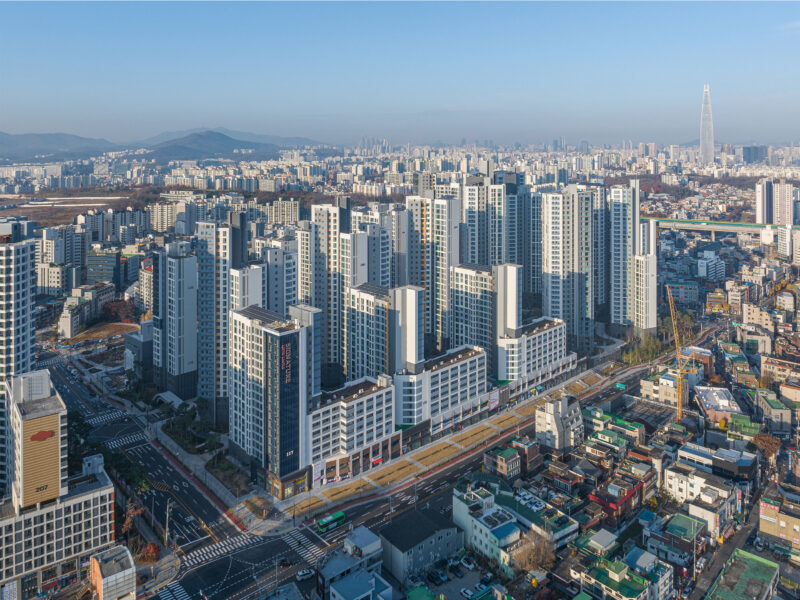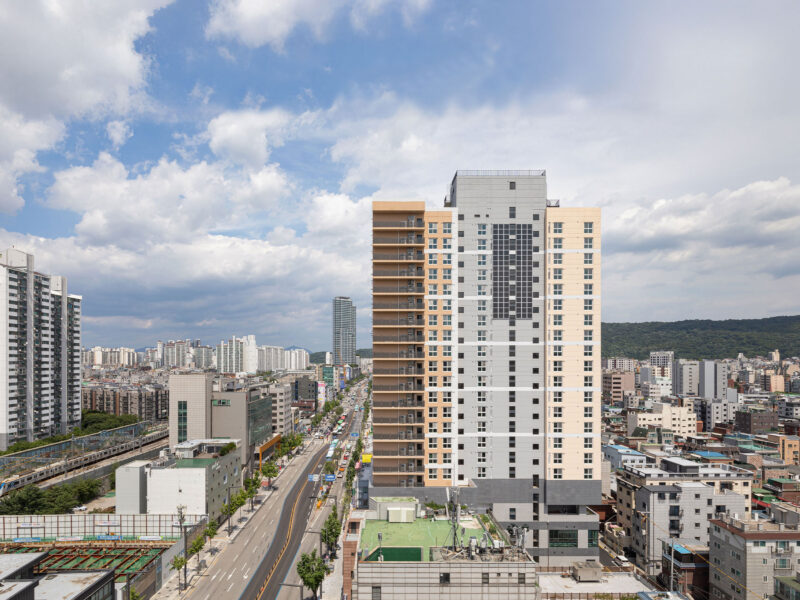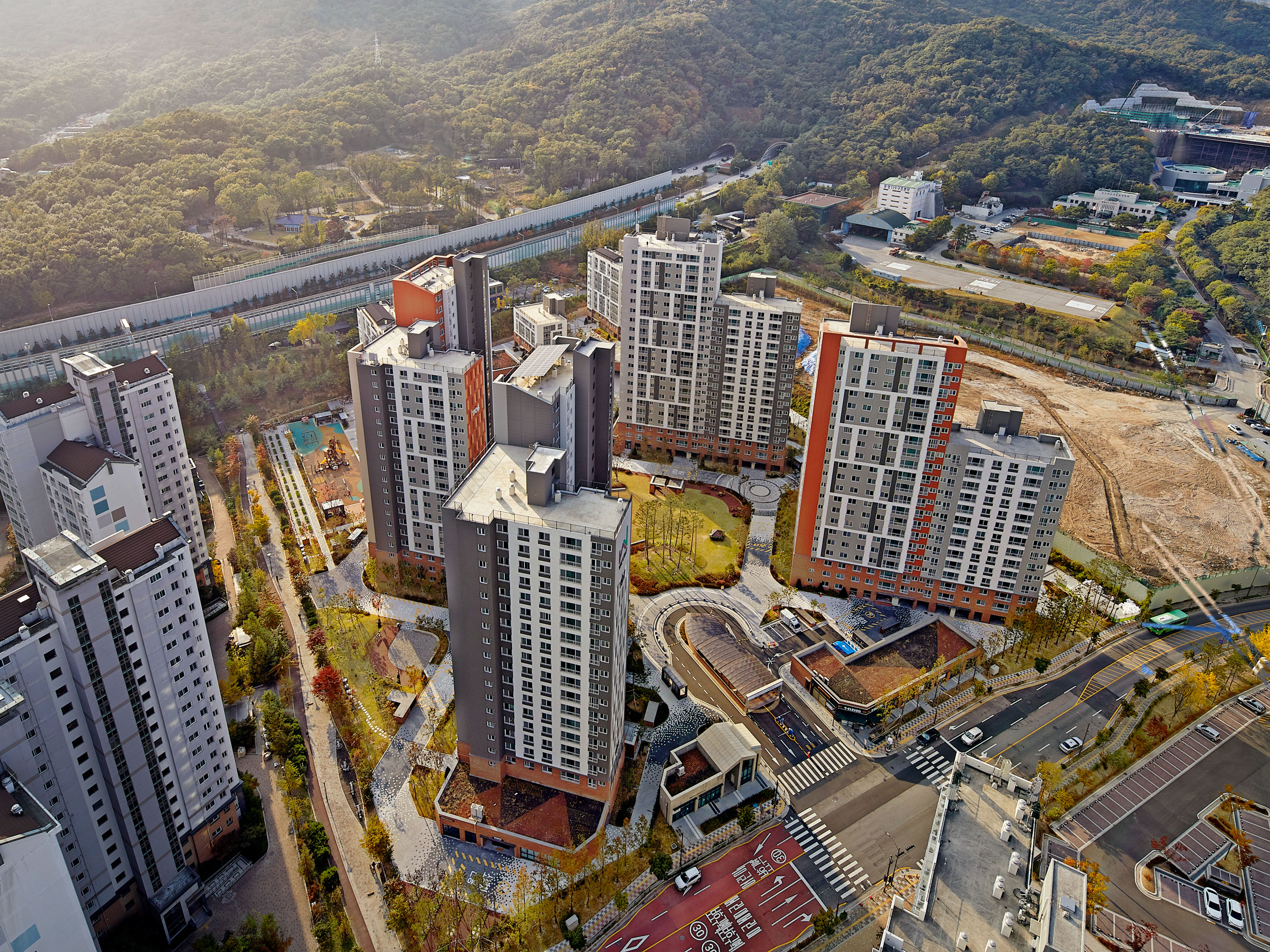


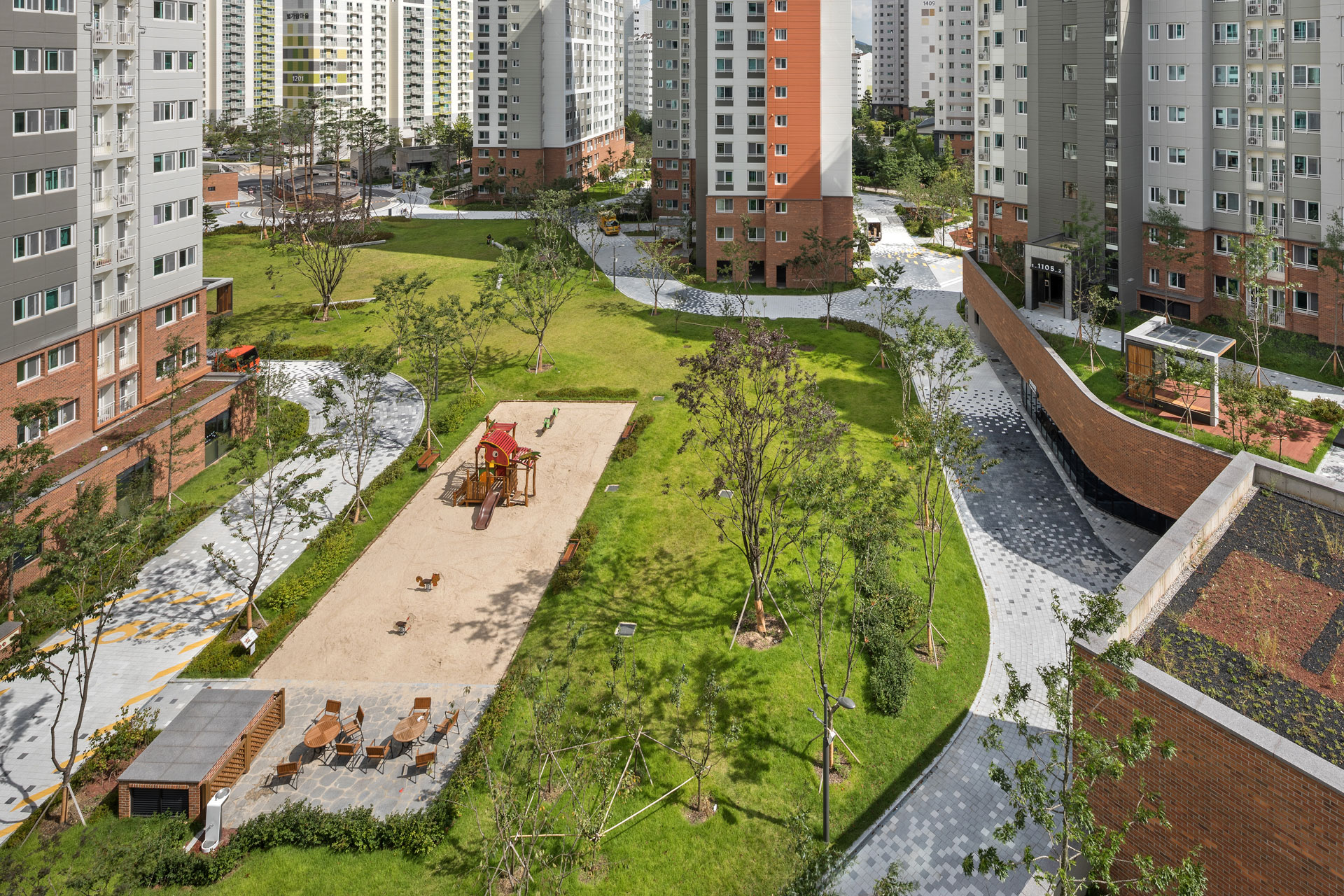
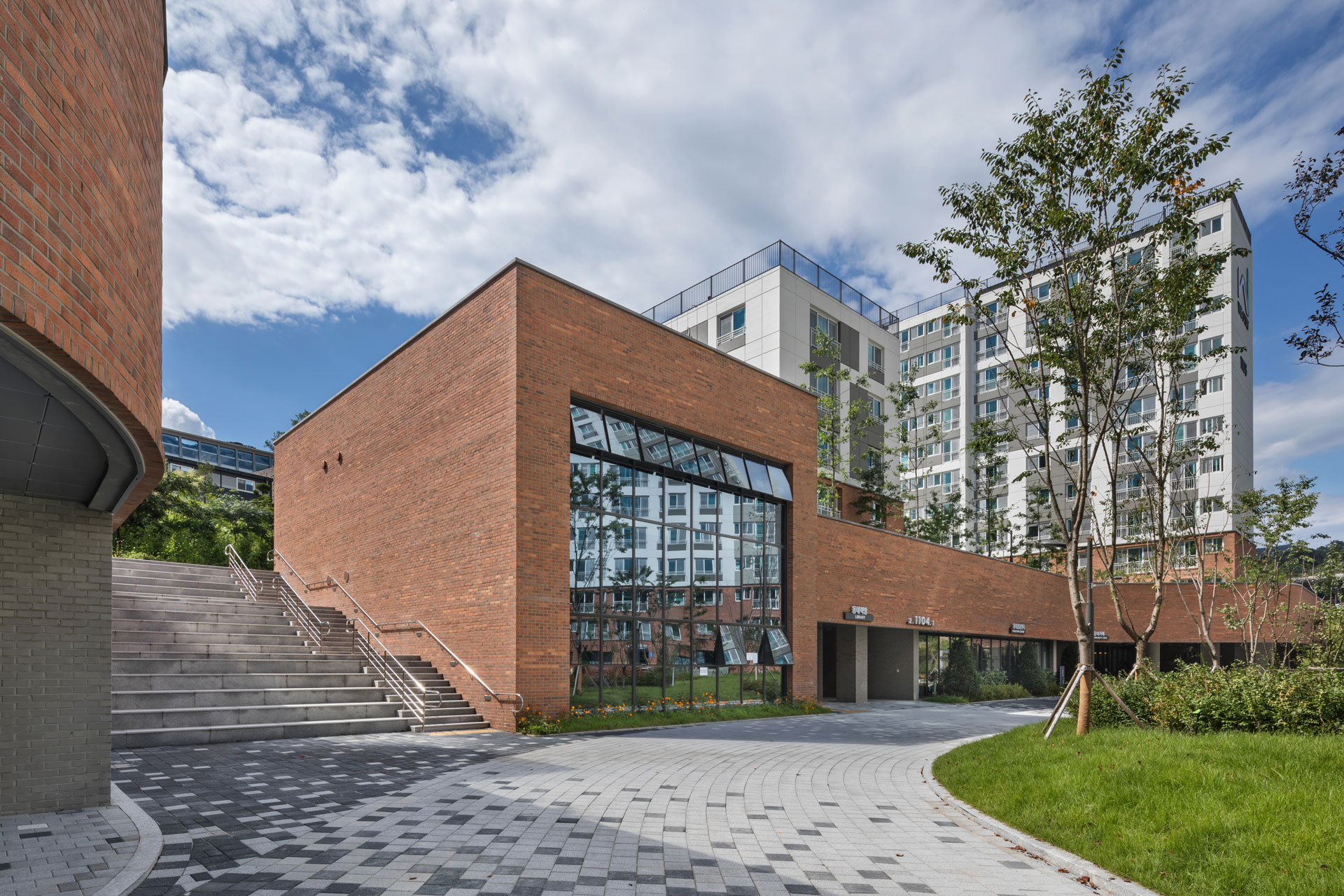

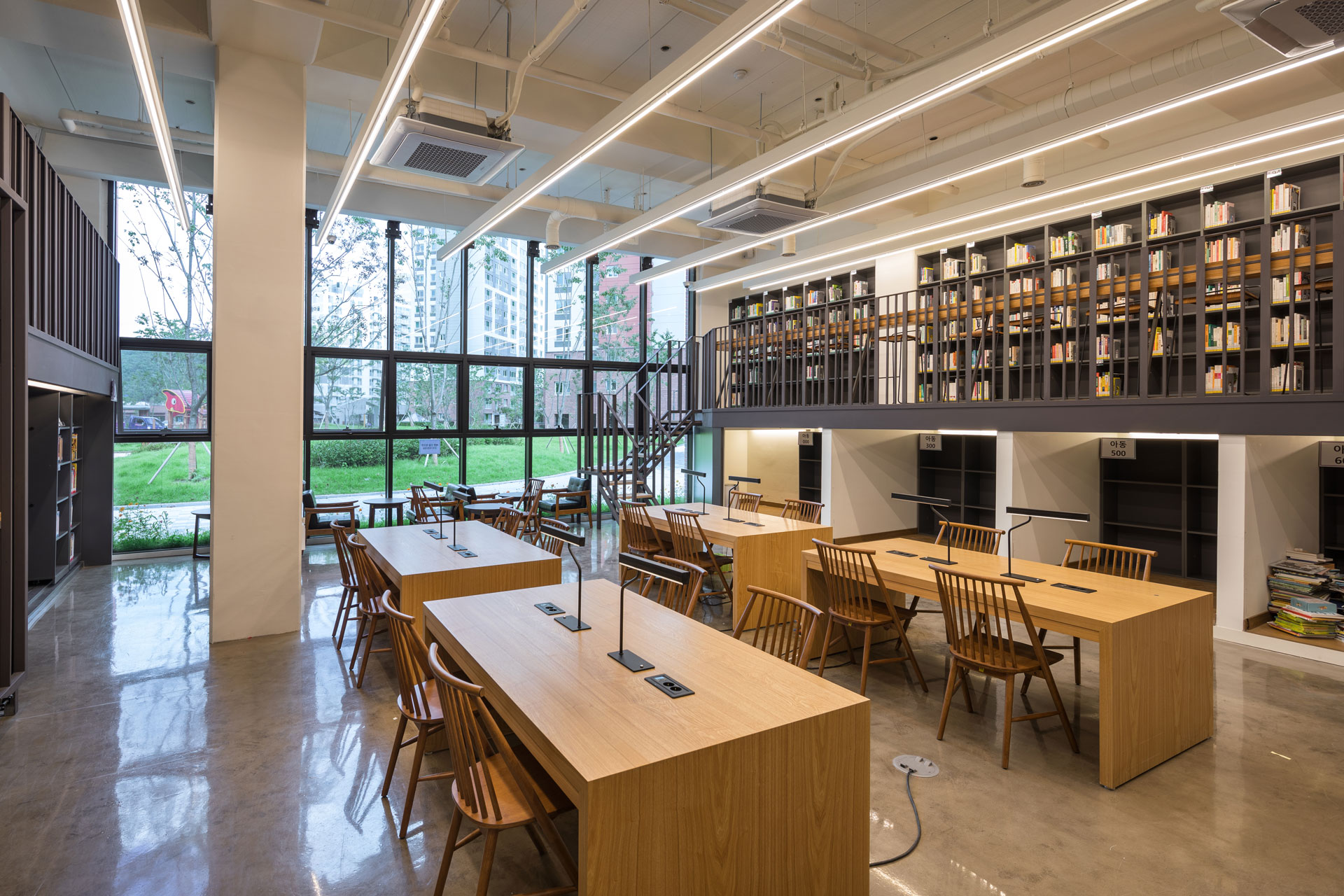
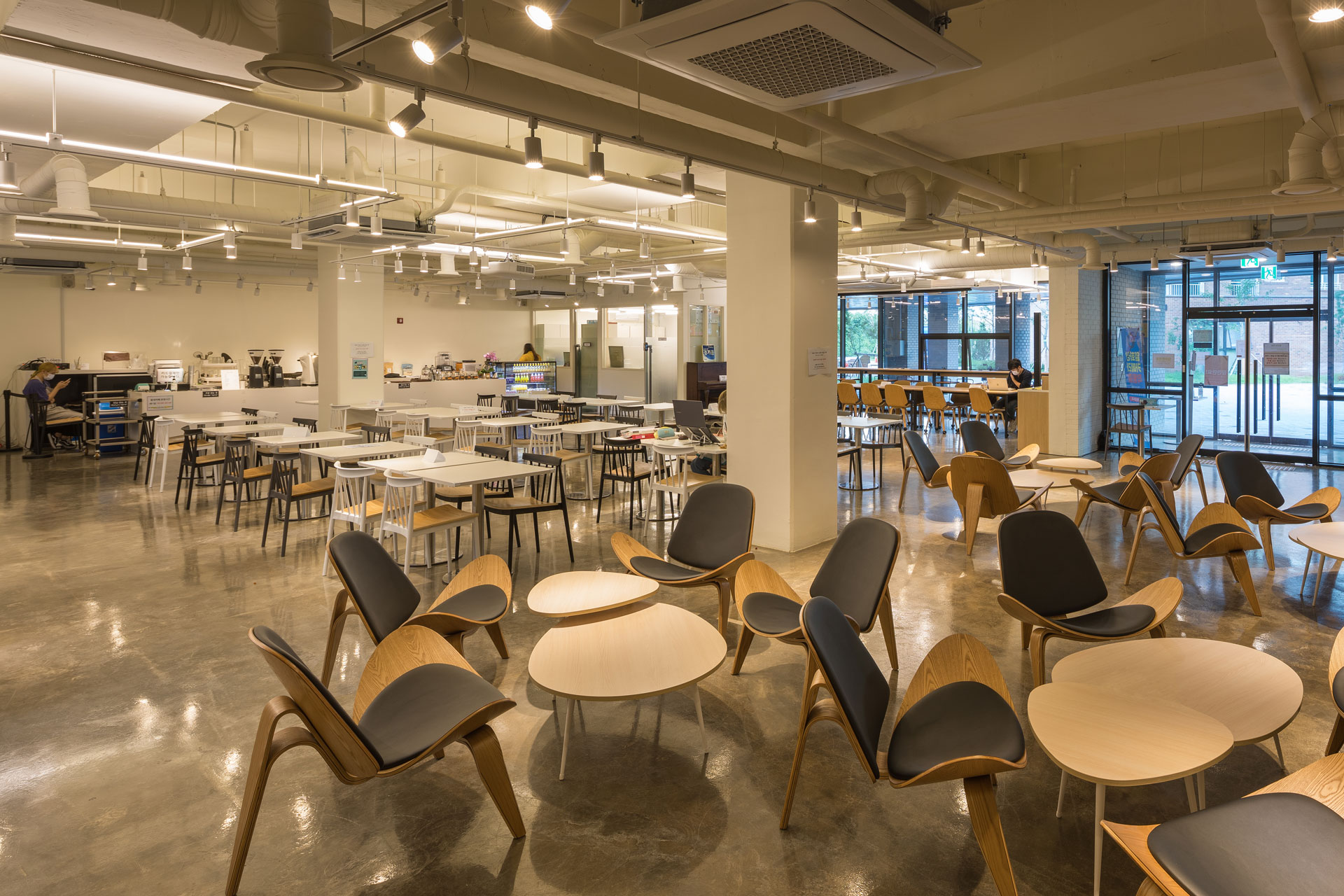
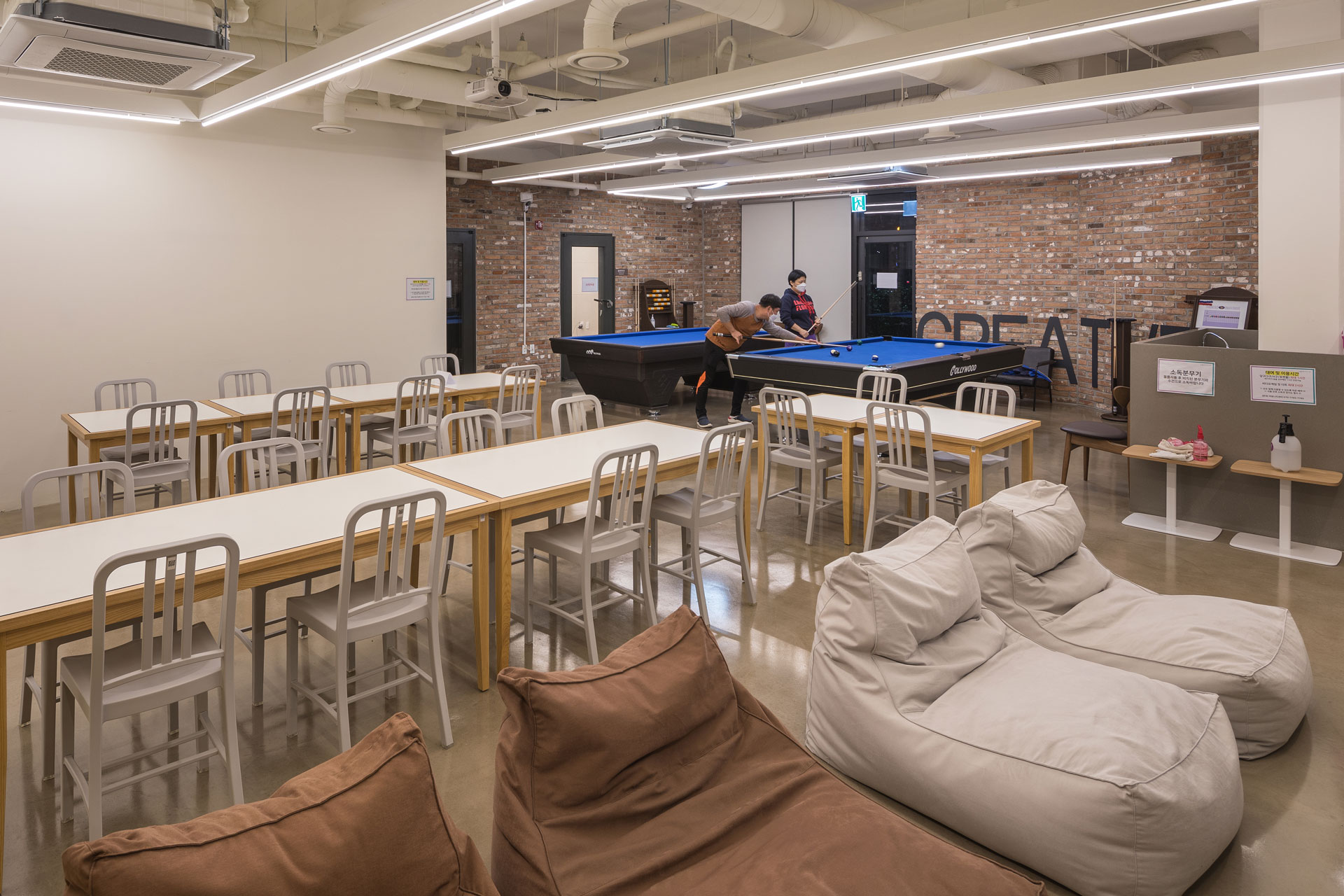
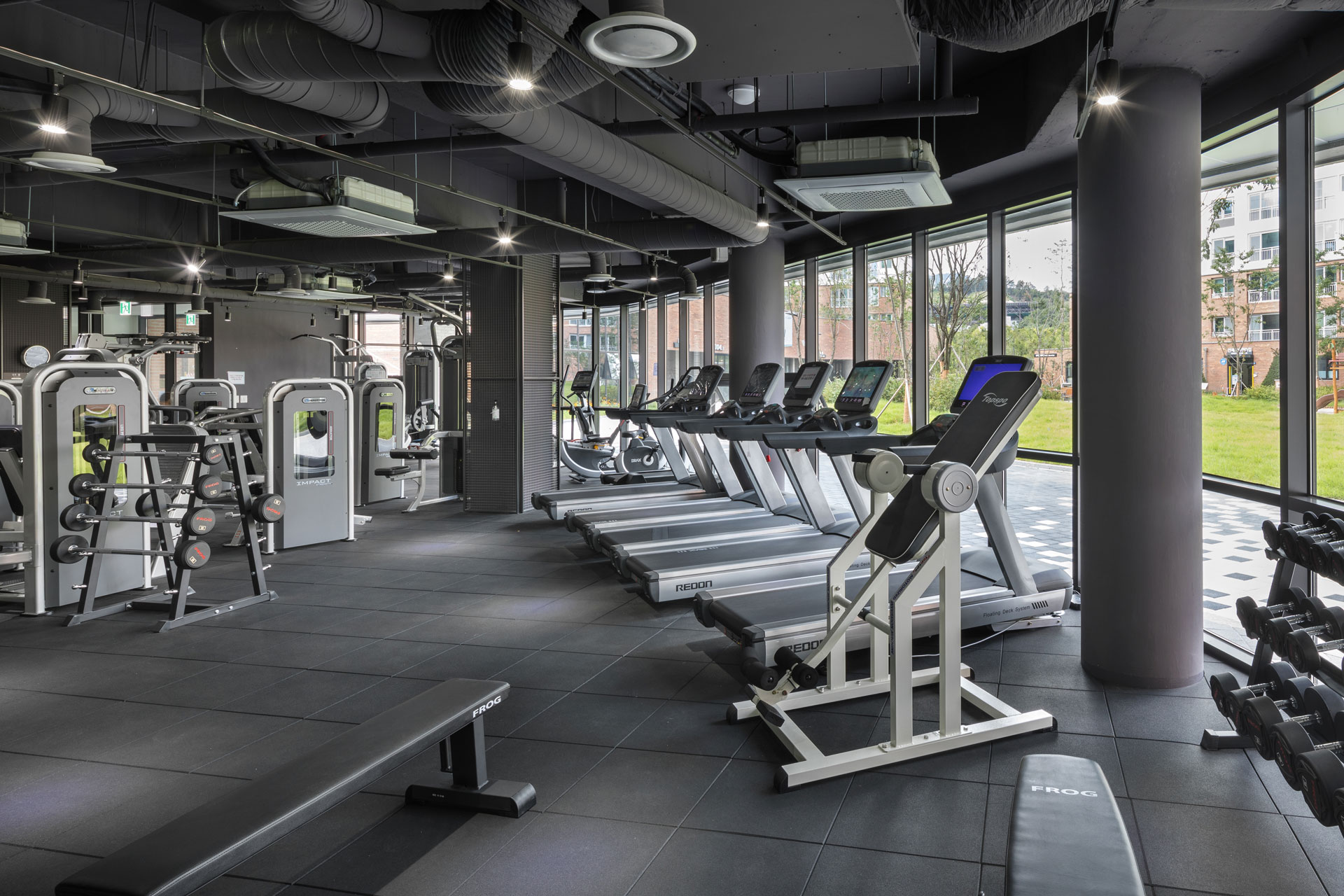
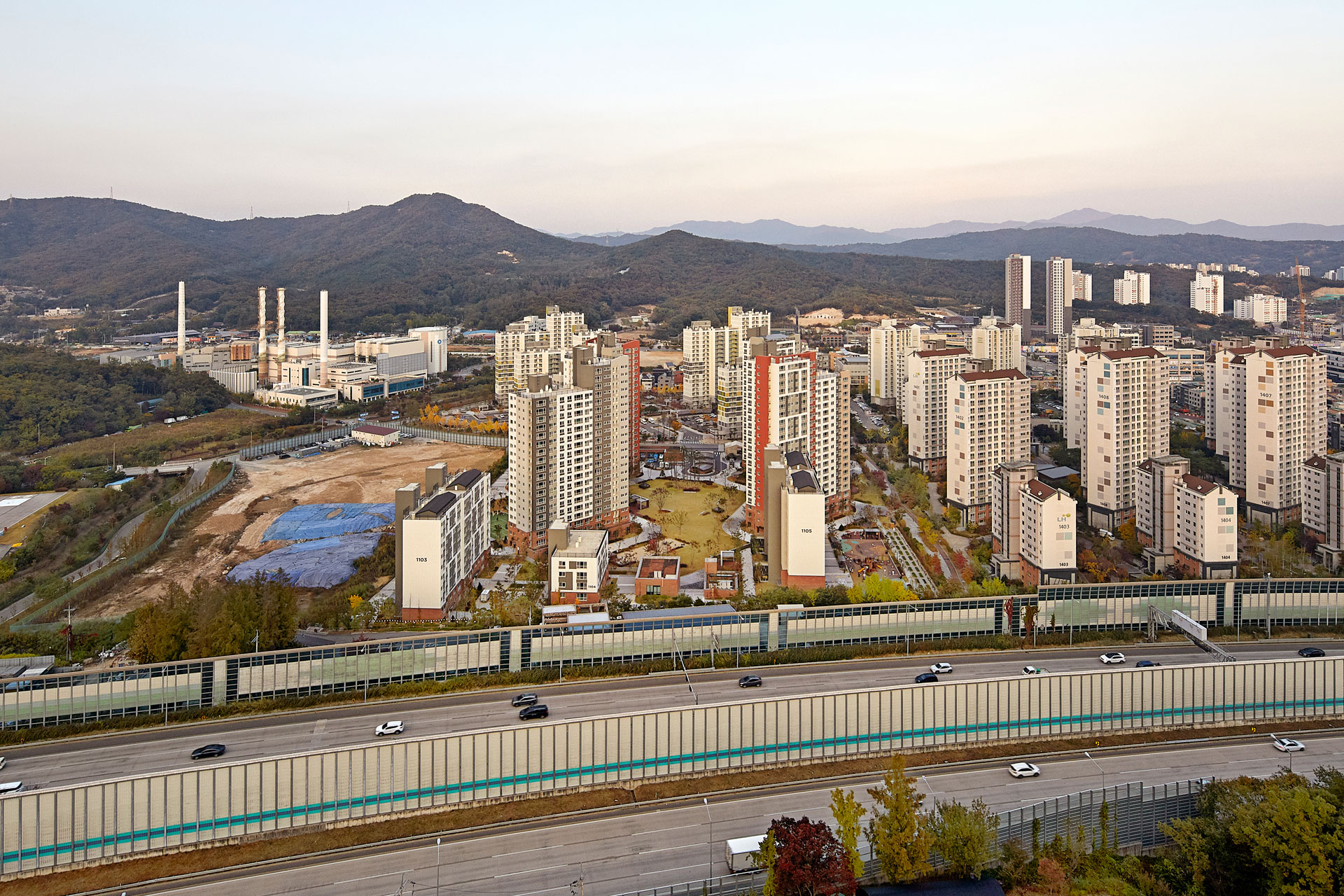
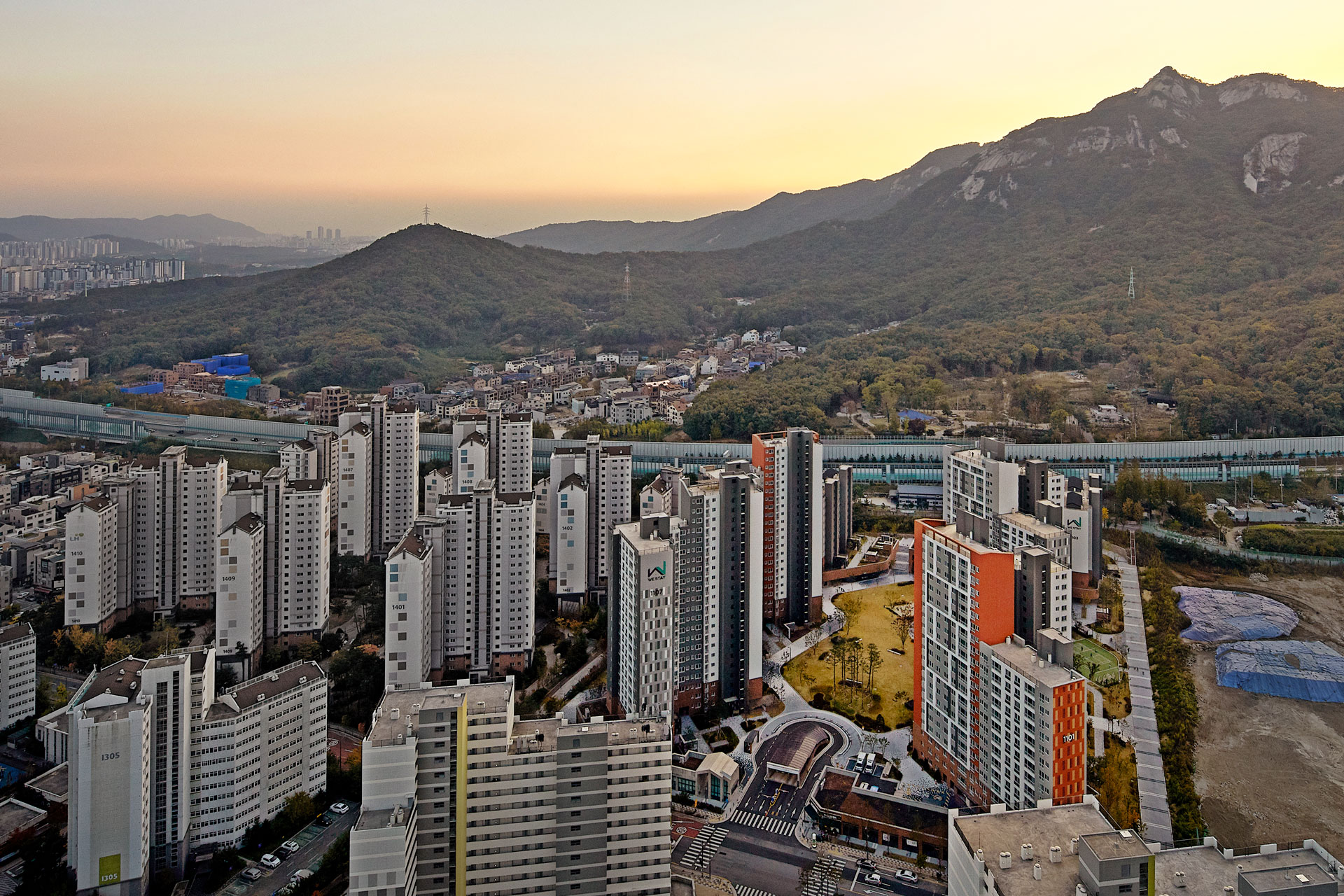
Westay Byeollae is South Korea’s first cooperative-type public-supported private rental housing project, developed as a pilot initiative by the Ministry of Land, Infrastructure and Transport. A cooperative-type rental housing model refers to a community-based “New Stay” in which a social enterprise undertakes development, while a cooperative owns and manages the property. It provides community spaces, facilities, and programs that enable residents to directly address and manage various needs arising in daily life. This project aims to create a residential complex that fosters community vitality and interaction between residents and the local neighborhood — enriching daily life with shared experiences — by leveraging its many advantages like abundant natural surroundings, convenient transportation, and central location within a residential district.
Located at the center of a public housing complex, the site is within a five-minute walk of an elementary school and close to Byeollae IC, which connects to the Seoul Ring Expressway, ensuring a stable living environment. With Mt. Bulam and Mt. Surak to the west and Deoksong Stream to the east, the site enjoys a natural setting characterized by baesanimsu (“mountain at the back, water at the front”). Accordingly, the buildings were oriented to the south to maximize daylight, while the view axis and the wind path were opened toward Mt. Bulam to enhance environmental comfort.
Along the main pedestrian axis around the central plaza of the complex, various community facilities featuring brick façades were arranged at the lower levels. The 1,200-pyeong (approximately 4,000 sq. m.) community zone hosts a range of programs: sharing businesses such as communal kitchens and libraries; non-profit community operations such as a mother center, library, after-school programs, childcare cooperative, and woodworking studio; and revenue-generating community enterprises including a local credit union, medical cooperative, and social venture offices.
Article
- [Aju] [Report] Where an entire village raises one child together… ‘Wistey Byeolnae’, that place
- [Hankyoreh] Why build the new-concept apartment ‘Wistey’?
- [MBN] The ‘Wistey Byeolnae’ by Deham, with a solid community structure… Building an apartment-style village community
- [Hankyoreh 21] [Cover Story] Did You Know There’s an Apartment Like This Where Every Neighborhood Kid Knows Each Other
- [eToday] Korea’s First Apartment-Style Village Community, Wistey Byeolnae: “An Alternative Housing Model”
- [Life In] The Future of Housing Cooperatives: Wistey Byeolnae Social Cooperative
-
Status
Completed
-
Awards
- 2021 25th MK Good Living Apartment Awards Special Award
-
Client
HaMSD Limited
-
Program
Residential
-
Design Year
2016
-
Completion Year
2020
-
Location
Namyangju-si, Gyeonggi-do
-
Site area
30,631.00m2
-
Gross Floor Area
49,715.92m2
-
Building Area
5,399.98m2
-
Number of Levels
B2, 22F
-
Partner
DO Landscape Design Office
-
Participants
-
Photo
Joonhwan Yoon











Westay Byeollae is South Korea’s first cooperative-type public-supported private rental housing project, developed as a pilot initiative by the Ministry of Land, Infrastructure and Transport. A cooperative-type rental housing model refers to a community-based “New Stay” in which a social enterprise undertakes development, while a cooperative owns and manages the property. It provides community spaces, facilities, and programs that enable residents to directly address and manage various needs arising in daily life. This project aims to create a residential complex that fosters community vitality and interaction between residents and the local neighborhood — enriching daily life with shared experiences — by leveraging its many advantages like abundant natural surroundings, convenient transportation, and central location within a residential district.
Located at the center of a public housing complex, the site is within a five-minute walk of an elementary school and close to Byeollae IC, which connects to the Seoul Ring Expressway, ensuring a stable living environment. With Mt. Bulam and Mt. Surak to the west and Deoksong Stream to the east, the site enjoys a natural setting characterized by baesanimsu (“mountain at the back, water at the front”). Accordingly, the buildings were oriented to the south to maximize daylight, while the view axis and the wind path were opened toward Mt. Bulam to enhance environmental comfort.
Along the main pedestrian axis around the central plaza of the complex, various community facilities featuring brick façades were arranged at the lower levels. The 1,200-pyeong (approximately 4,000 sq. m.) community zone hosts a range of programs: sharing businesses such as communal kitchens and libraries; non-profit community operations such as a mother center, library, after-school programs, childcare cooperative, and woodworking studio; and revenue-generating community enterprises including a local credit union, medical cooperative, and social venture offices.
Article
- [Aju] [Report] Where an entire village raises one child together… ‘Wistey Byeolnae’, that place
- [Hankyoreh] Why build the new-concept apartment ‘Wistey’?
- [MBN] The ‘Wistey Byeolnae’ by Deham, with a solid community structure… Building an apartment-style village community
- [Hankyoreh 21] [Cover Story] Did You Know There’s an Apartment Like This Where Every Neighborhood Kid Knows Each Other
- [eToday] Korea’s First Apartment-Style Village Community, Wistey Byeolnae: “An Alternative Housing Model”
- [Life In] The Future of Housing Cooperatives: Wistey Byeolnae Social Cooperative




